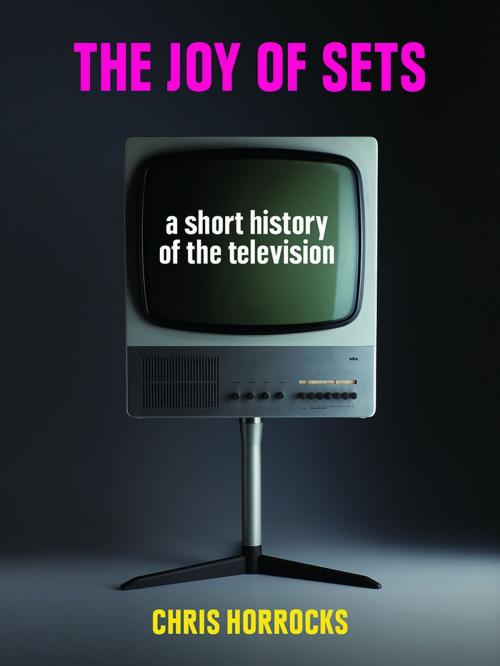| Author: | Chris Horrocks | ISBN: | 9781780237831 |
| Publisher: | Reaktion Books | Publication: | December 22, 2017 |
| Imprint: | Reaktion Books | Language: | English |
| Author: | Chris Horrocks |
| ISBN: | 9781780237831 |
| Publisher: | Reaktion Books |
| Publication: | December 22, 2017 |
| Imprint: | Reaktion Books |
| Language: | English |
It is a modern activity, one of the primary ways we consume information and entertainment, something we’ll do over dinner, at a bar, or even standing on the street peering into a store window—watch TV. Many of us spend countless hours in front of the tube, and even those of us who have proudly eliminated it from our lives can probably still rattle off the names of today’s most popular shows. But for as crucial as television viewing is in modern culture, the television set itself, as a ubiquitous object in our environment, rarely captures our attention—turn one off and it seems to all but disappear. In this book, Chris Horrocks tells the story of the television set, exploring its contradictory presence in our lives as both a material object and a conveyor of illusory images.
Horrocks begins in the nineteenth century and television’s prehistory as a fantastic, futuristic concept. He follows the television’s journey from its strange roots in spiritualism, imperialism, and Victorian experiments in electro-magnetism to the contested accounts of its actual invention, looking at the work of engineering pioneers such as Philo Farnsworth and John Logie Baird. Unboxing sets all across the world, he details how it arrived as an essential consumer product and began to play an extraordinary role as a bridge between public and private life. Horrocks describes how the console and cabinet themselves expressed status and good taste and how their designs drew on cultural phenomena such as the space race and the avant-garde. He discusses how we have both loved it for what it can provide and reviled it as a sinister object literally controlling our thoughts, and he shows how it has figured in other cultural realms, such as the work of artists like Wolf Vostell and Nam June Paik. Finally, Horrocks laments the death of the cathode ray tube and the emergence of the flat-screen, which has reduced the presence of the television as a significant material object. Altogether, The Joy of Sets brings this most elusive object into crystal-clear critical and historical focus.
It is a modern activity, one of the primary ways we consume information and entertainment, something we’ll do over dinner, at a bar, or even standing on the street peering into a store window—watch TV. Many of us spend countless hours in front of the tube, and even those of us who have proudly eliminated it from our lives can probably still rattle off the names of today’s most popular shows. But for as crucial as television viewing is in modern culture, the television set itself, as a ubiquitous object in our environment, rarely captures our attention—turn one off and it seems to all but disappear. In this book, Chris Horrocks tells the story of the television set, exploring its contradictory presence in our lives as both a material object and a conveyor of illusory images.
Horrocks begins in the nineteenth century and television’s prehistory as a fantastic, futuristic concept. He follows the television’s journey from its strange roots in spiritualism, imperialism, and Victorian experiments in electro-magnetism to the contested accounts of its actual invention, looking at the work of engineering pioneers such as Philo Farnsworth and John Logie Baird. Unboxing sets all across the world, he details how it arrived as an essential consumer product and began to play an extraordinary role as a bridge between public and private life. Horrocks describes how the console and cabinet themselves expressed status and good taste and how their designs drew on cultural phenomena such as the space race and the avant-garde. He discusses how we have both loved it for what it can provide and reviled it as a sinister object literally controlling our thoughts, and he shows how it has figured in other cultural realms, such as the work of artists like Wolf Vostell and Nam June Paik. Finally, Horrocks laments the death of the cathode ray tube and the emergence of the flat-screen, which has reduced the presence of the television as a significant material object. Altogether, The Joy of Sets brings this most elusive object into crystal-clear critical and historical focus.















